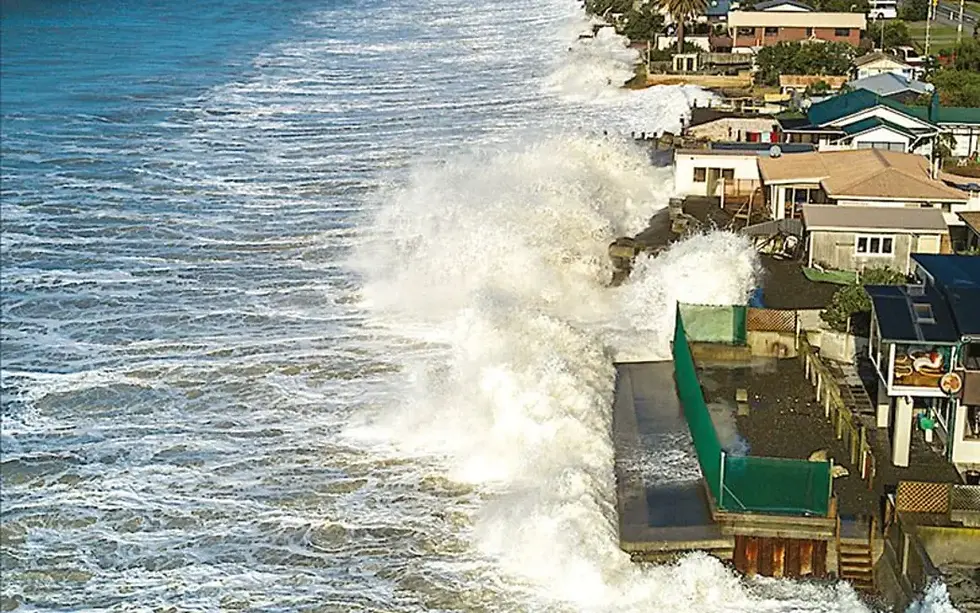Real Estate : Floating City Projects
- charlotteselve8
- 2 sept. 2023
- 3 min de lecture
The world is currently riding a wave of innovation in urban planning and architecture, with floating cities emerging as a visionary response to the growing challenges of climate change and urbanization.
From the tranquil waters of the Baltic Sea to the bustling cityscape of Dubai, these ambitious projects, each led by visionary architects from diverse backgrounds, are poised to reshape our urban future.
Floating Cities (Ongoing) Projects
1. BLUE 21 Project: Leading the Way in the Baltic Sea
Location: Baltic Sea
Project Commencement: 2014
Architect: Koen Olthuis (Netherlands)
The BLUE 21 Project, guided by Dutch architect Koen Olthuis since its inception in 2014, has been making a significant impact. Situated in the Baltic Sea, this innovative community is designed to adapt to rising sea levels, thanks to groundbreaking floating platform technology.
2. Vario Vitae Project: Buffalo's Vision for Floating Communities
Location: Buffalo, New York
Status: Under Development
Architect: Sarah Thompson (United States)
Buffalo, New York, is on the brink of a floating revolution, spearheaded by American architect Sarah Thompson and the Vario Vitae Project. Currently in the development phase, this eco-conscious initiative promises to blend sustainability and urban living seamlessly.
3. The Heat of Europe in Dubai: An Urban Oasis with terrible eco footprint
Location: Dubai, United Arab Emirates
Status: Under Construction
Architect: Norman Foster (United Kingdom)
Dubai's "The Heat of Europe" project, conceived by the renowned British architect Norman Foster, adds a unique twist to the floating cities narrative. Located in the heart of the Persian Gulf, this project replicates the concept of floating cities but on a colossal scale, prompting questions about its long-term sustainability.
4. Flex Pods: Transforming Living Spaces in Canada
Location: Lenora, Ontario, Canada
Conceptualized: 2020
Architect: Emily Chen (Canada)
Canada has embraced the notion of flexible living with the Flex Pods project, envisioned by Canadian architect Emily Chen. Still in its conceptual stages, Flex Pods offer innovative, adaptable, and mobile floating living spaces, revolutionizing waterfront living.
5. Floating City of Malé: The Maldives' Sustainable Oasis
Location: Malé, Maldives
Planned: 2027
Architect: Bjarke Ingels (Denmark)
The Maldives is charting a sustainable course with the Floating City of Malé, conceived by Danish architect Bjarke Ingels. Set for realization in 2027, this ambitious project aims to create a climate-resilient haven amidst the Indian Ocean, addressing the pressing issue of sea-level rise.
6. Oceanix Project: BIG's Vision for Resilient Floating Cities
Location: TBD
Conceptualized: 2019
Architect: Bjarke Ingels (Denmark)
Architectural powerhouse Bjarke Ingels Group (BIG) leads the way with the Oceanix Project, offering a blueprint for modular, sustainable floating communities. While the specific location remains flexible, the concept is solid: self-sustaining floating neighborhoods for a resilient urban future.
7. Green Float Project: Singapore's Aquatic Utopia
Location: Singapore
Status: Ongoing
Architect: Paul Lukez (United States)
Singapore's Green Float Project, steered by American architect Paul Lukez, envisions a verdant, self-sustaining floating city. This ongoing project showcases a harmonious coexistence between urban life and natural beauty.
8. MegaFloat and Ocean Spiral: Japan's Futuristic Visions
Location: Pacific Ocean
Conceptualized: MegaFloat (1995), Ocean Spiral (2016)
Architects: Kiyonori Kikutake (Japan), Shimizu Corporation (Japan)
Japan has been a pioneer in floating city concepts, boasting MegaFloat (1995) and Ocean Spiral (2016). Designed by Japanese architects and engineering firms, these visionary projects aim to redefine urban life beneath the waves.
Comparative Analysis
These groundbreaking projects, steered by visionary architects from around the world, offer a sneak peek into a future where resilient, sustainable, and adaptable floating cities become a tangible reality. Whether combating sea-level rise or reimagining urban living, these innovative initiatives are charting a new course for our urban landscapes.
Ecological Footprint Analysis
When analyzing these projects' ecological footprints, it's evident that the Dutch water management structures, like the Oosterscheldekering and Maeslantkering, have relatively low operational impacts. They primarily focus on flood protection and do not contribute significantly to carbon emissions.
On the other hand, urban-based projects such as the Water Plaza and Schoonschip prioritize sustainability. Their emphasis on energy-efficient technologies, wastewater treatment, and community-oriented design significantly reduces their ecological footprint.
In conclusion, the evolution of floating cities presents a spectrum of solutions, each contributing to a more resilient and sustainable urban future.
As the world grapples with the challenges of climate change and urbanization, these projects shine as beacons of innovation and hope, steering us toward a brighter and more sustainable tomorrow


Commentaires